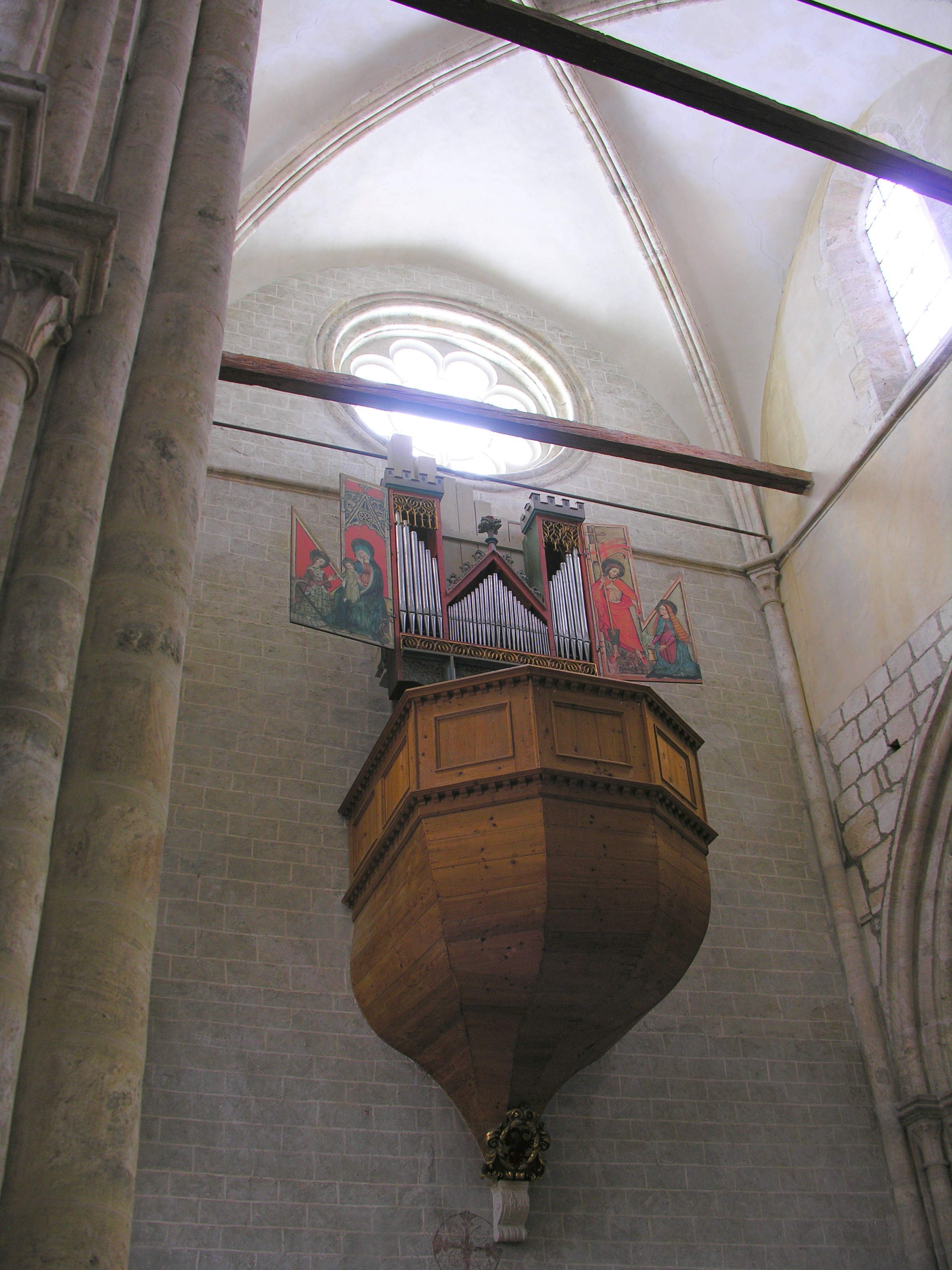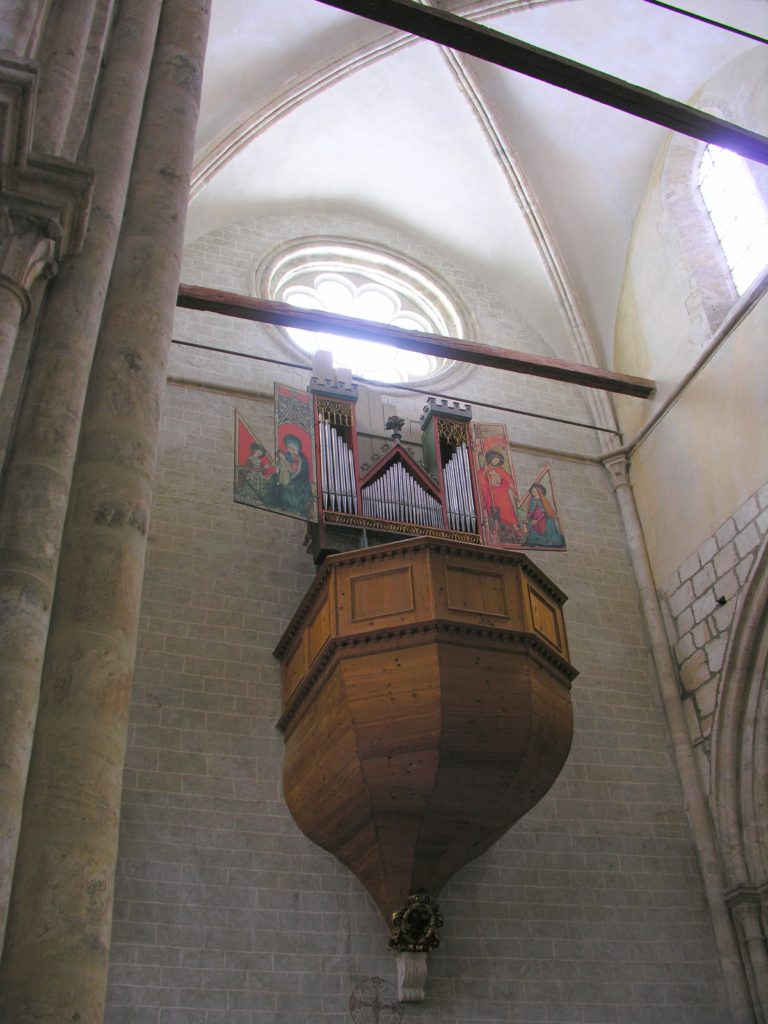
Christopher Aeby | Restored in 2004
- Principal 8′
- Octave 4′
- Copel 4′
- Quint major 2 2/3′
- Superoctave 2′
- Quint minor 1 1/3′
- Mixtur II 1′
- Basse 16′ + 8′
Read the description of the organ
The organ of the basilica of Valère in Sion
Valuable and outstanding, it is the oldest still playable organ in the world. With its gothic-style case, it was built around 1410-1435. The doors were painted by Peter Maggenberg in 1435. The left door depicts the mystical marriage of Saint Catherine, patroness of Valère and of Valais. The right door depicts the appearance of Christ to Mary Magdalene, who mistakes him for a gardener.
The Solothurn organ builder Christopher Aebi was entrusted the mission of rebuilding the organ, using the existing elements that were still serviceable. According to the bill of specifications, the case should remain unchanged, whereas the manual should be placed higher and its compass expanded. Christopher Aebi added four stops, a second rank to the mixture, as well as the soundboard of the manual. He transformed the existing rollerboard and the manual. It is on the right-hand side of the wind supply that he appended his signature – “Christoph Aeby 1687” – to mark his operation.
In 1786, the Valais organ builder Felix Carlen added two wedge bellows and the windtrunks. The traces on the rack of the pumping handles indicate that the organ was supplied by three smaller bellows. Likewise, Felix Carlen signed his work on the cap as well as on the clip of the pallet box.
In 1812, Jean-Baptiste Carlen – the son of Felix Carlen – expanded the organ by adding a 16’ and 8’ Soubasse with short octave and manufactured the pedal soundboard with its action as well as the pedalboard. He also replaced one of the wedge bellows and signed his operation on the non-return valve of the eastern wind supply.
In 1954, a further refurbishment was carried out by the Kuhn manufactory, in collaboration with the Basel Art Museum.
In 2004, an extensive restoration was undertaken by the Füglister manufactory in Valais. In collaboration with the Dendrochronology Laboratory of Western Switzerland, it has been possible to date several parts of the organ and to confirm the operations carried out on the organ in 1786 and 1812. They match the inscriptions present on the non-return valve, the cap and the clip of the pallet box. Christopher Aebi replaced the veneers of the manual with sycamore, and not with boxwood as had been previously assumed. A Carbon-14 analysis made it possible to date the D-key between 1297 and 1403. A different shape of key was discovered under the veneers of the walnut keys. This finding implies, at a time in history, a change of cover or the reuse of older keys.
The pipes of the Superoctave 2’, Quinte minor and 1’ stops of the mixture have a high lead content and have a moulded sand structure. Likewise, the Carbon-14 analysis made it possible to date the Copel 4’ wooden stop between 1293 and 1400. It follows that the age is the same as the one of the manual, which creates a link with its origin.
The pitch ranges at 897 oscillations, i.e. nearly a semitone above the standard pitch nowadays. Unfortunately, an equal temperament was imposed on the manufactory during the 2004 restoration.
The restoration of the organ of Valère revealed that several parts date back to a much more ancient period than had been assumed until now.

